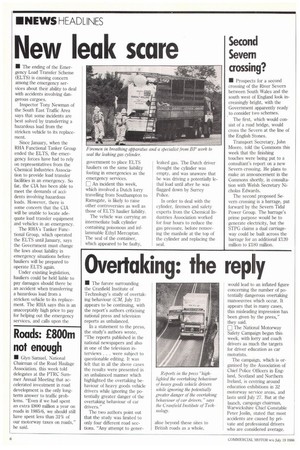Overtaking: the reply
Page 8

If you've noticed an error in this article please click here to report it so we can fix it.
• The furore surrounding the Cranfield Institute of Technology's study of overtaking behaviour (CM, July 12) appears to be continuing, with the report's authors criticising national press and television reports as unbalanced.
In a statement to the press, the study's authors wrote, "The reports published in the national newspapers and also in one of the television interviews . . . were subject to questionable editing. It was felt that in all the above cases the results were presented in an unbalanced manner which highlighted the overtaking behaviour of heavy goods vehicle drivers while ignoring the potentially greater danger of the overtaking behaviour of car drivers."
The two authors point out that the study was limited to only four different road sections. "Any attempt to gener alise beyond these sites to British roads as a whole, would lead to an inflated figure concerning the number of potentially dangerous overtaking manoeuvres which occur. It appears that in many cases, this misleading impression has been given by the press," they said.
The National Motorway Safety Campaign began this week, with lorry and coach drivers as much the targets for driver education as car motorists.
The campaign, which is organised by the Association of Chief Police Officers in England, Scotland and Northern Ireland, is centring around education exhibitions in 32 motorway service areas, and lasts until July 27. But at the launch, campaign chairman, Warwickshire Chief Constable Peter Joslin, stated that most accidents are caused by private and professional drivers who are considered average.




























































































